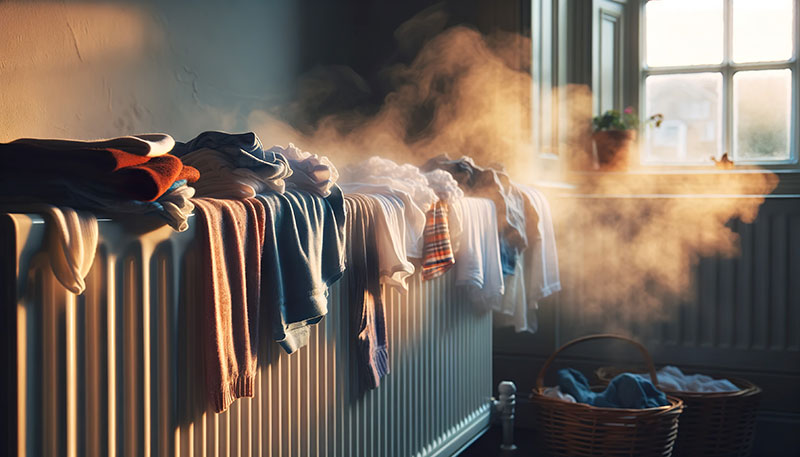Damp is a common problem in British homes and businesses. The moist climate and older housing stock contribute to its prevalence. Left untreated, damp can lead to serious health problems and damage your property. Identifying the cause of damp and addressing it promptly is crucial.
Common Causes of Damp in UK Properties
There are four main types of damp that affect UK properties:
Rising Damp: This occurs when groundwater rises through the foundations and into the walls. It’s most common in older buildings with solid walls and inadequate damp-proof courses.
Penetrating Damp: This happens when water enters the property from outside. Leaking roofs, blocked gutters, defective pipes, and cracks in walls can all cause penetrating damp.
Lateral Damp: This type of damp arises when moisture moves through the walls from the surrounding ground. Poor drainage around the building can contribute to lateral damp.
Condensation Damp: This is caused by excessive moisture in the air condensing on cooler surfaces, such as walls and windows. Poor ventilation, drying clothes indoors, and a lack of heating can all contribute to condensation damp.

Factors that Contribute to Damp
Several factors can worsen damp problems in your property:
Structural Issues: Poor pointing (the mortar between bricks), cracks in walls, and defective drainage around the building can all allow water ingress.
Environmental Factors: Poor ventilation, condensation on windows, and drying laundry indoors all increase moisture levels and the risk of damp.
Lifestyle Habits: Infrequent showering, drying clothes indoors for extended periods, and a lack of heating can contribute to a damp environment.

How to Identify Damp
There are several telltale signs of damp in your property:
Visible Signs: Look for water stains, peeling wallpaper, mould growth on walls and ceilings, and damp patches on floors.
Telltale Odours: A musty odour is a common indicator of dampness.
Impact of Damp
Damp can have a significant impact on your health and property:
Health Risks: Exposure to damp can lead to respiratory problems, allergies, and even worsen existing health conditions like asthma.
Damage to Property: Damp can cause structural damage, including rotting wood, peeling paint, and cracked plaster. It can also damage furniture and belongings and reduce the value of your property.
Preventing Damp
There are several steps you can take to prevent damp in your property:
Maintaining Proper Ventilation: Ensure adequate ventilation throughout your home or business. Open windows regularly, especially during cooking and showering. Consider installing extractor fans in kitchens and bathrooms.
Addressing Structural Issues: Repair any cracks in walls, ensure pointing is in good condition, and address any drainage problems around the building.
Lifestyle Habits: Dry clothes outdoors whenever possible. Shower regularly and use extractor fans in bathrooms. Maintain a consistent heating level, especially during colder months.
Conclusion
Identifying and addressing damp problems promptly is crucial to protect your health and property. If you suspect damp in your home or business, don’t hesitate to seek professional help.
A qualified damp proofing company like JNR Projects can identify the source of the damp and recommend the most effective solution.
Contact JNR Projects Today
Contact JNR Projects today for a free damp survey and quote. We can help you eliminate damp from your property and create a healthier living or working environment.
